Protected Under
Antiquities Act 1975
31°33'14.9"N 74°18'17.1"E
Antiquities Act 1975
Chauburji was a gate to a beautiful garden which was lost over time
The Best Time to Visit Punjab Province is Year long as it has bearable Cold winters and Hot Summers. However, Summers can get really Hot and precautions are recommended during Daytime visits.

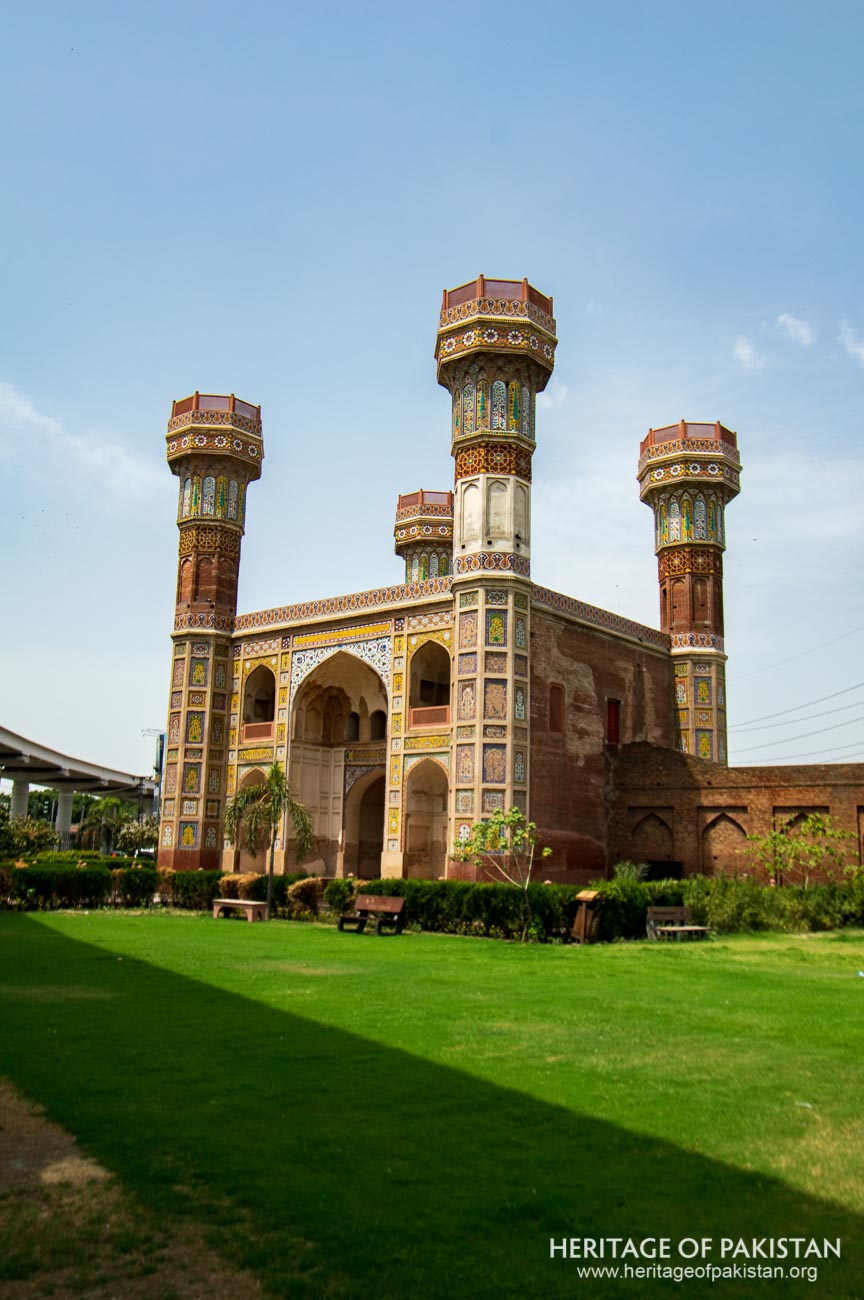
Chauburji is an iconic architectural structure in Lahore which derives its name from the Persian words ‘Chau’ meaning four and ‘Burj’ meaning minarets, referring to its most striking feature: the four tall minarets. Constructed in 1646 during the reign of Mughal Emperor Shah Jahan, Chauburji is a beautiful example of the grandeur and architectural brilliance of the Mughal era. It is an iconic monument of Lahore city, the capital of Punjab city.
Originally, Chauburji served as the gateway to a magnificent garden associated with Zebunnisa or Zebinda Begum, the daughter of Emperor Aurangzeb Alamgir. However, given that Zebunnisa was only eight years old at the time of construction, it has been suggested that the inscription may actually refer to her aunt, Jahanara Begum, a daughter of Emperor Shah Jahan. This suggestion gains credibility from historical context and records.
An inscription on the eastern archway of Chauburji states that it was built by Sahib-e-Zebinda (one endowed with elegance), Begam-e-Dauran (the lady of the age), and was bestowed upon Mian Bai, Fakhrunisa (the pride of the ladies). The reference is most probably to Jahanara Begum, the eldest daughter of Emperor Shah Jahan, who was entitled as ‘Begum Sahib’ and, for all official purposes, was the ‘lady of the age’ after the death of her mother in 1631. The existence of Jahanara Begum's garden in Lahore is confirmed by two letters from Emperor Aurangzeb addressed to her. Local tradition erroneously connects Zebinda with Zebunnisa Begum and Mian Bai as her maid-servant; however, this tradition is incorrect, as Zebunnisa, born in 1639, was still a child when the garden was founded.
The garden, once an extension of the Chauburji gateway, has entirely disappeared. Historically, it extended from Nawankot in the south to the main city of Lahore towards the north, reflecting Lahore's title as ‘The City of Gardens.’ Unfortunately, today only the structure of Chauburji remains, with the expansive garden having vanished over time, likely due to damages inflicted by the River Ravi's flooding.
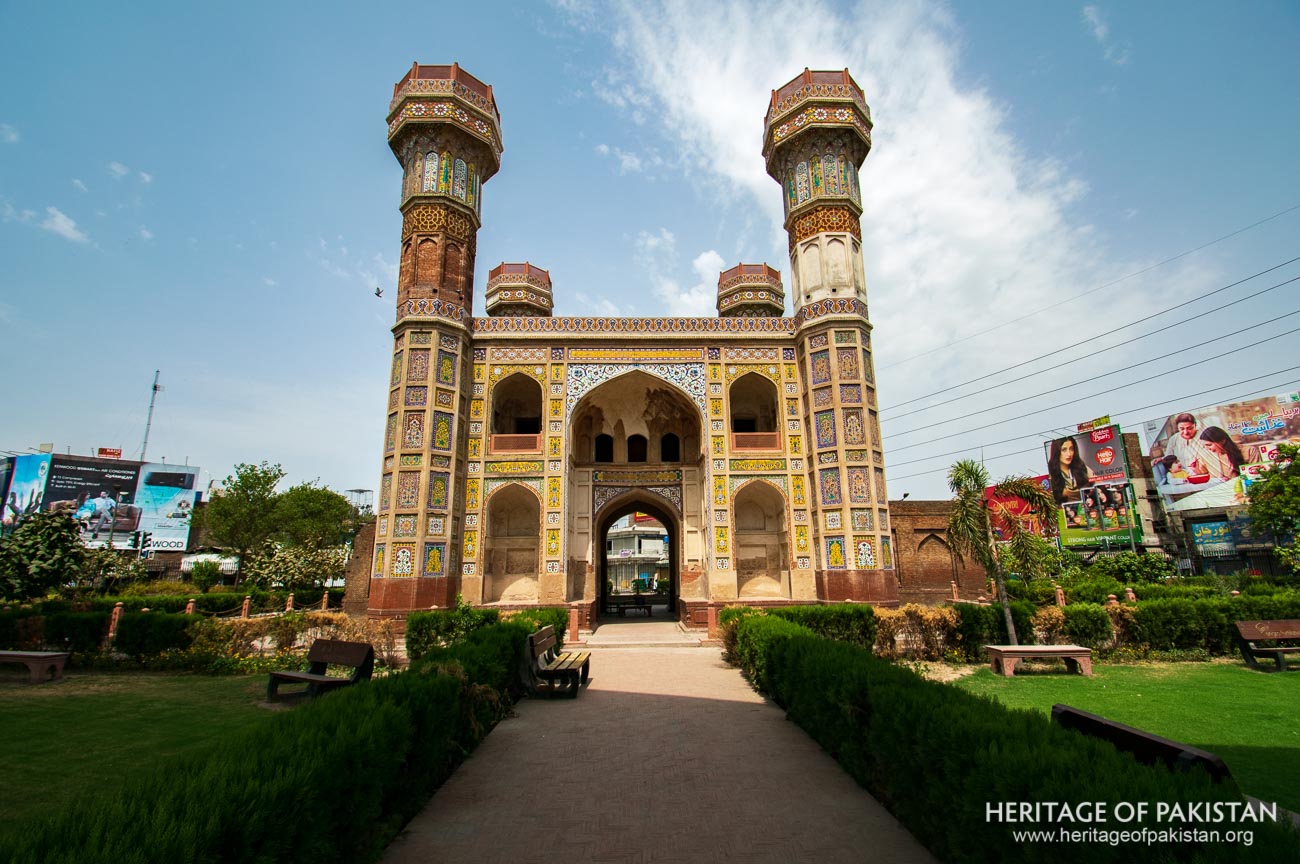 Chauburji derives its name from its four minarets
Chauburji derives its name from its four minaretsThe Chauburji gate was a major, massive structure that once proclaimed the power of its patron Jahanara Begum at the entrance to her garden, The structure’s decorative elements, although worn and partially missing, provide evidence of the introduction of the new Mughal decorative style into the traditional vocabulary of Islimi Khatai. This blending of styles underlines the evolution and adaptation of artistic techniques during the Mughal period.
The monument is located on Multan Road, and the intersection is known by the same name, ‘Chauburji.’ The architectural significance of Chauburji is notable, with its intricate design and imposing presence reflecting the artistic and cultural zenith of the Mughal Empire. Despite the wear and tear over the centuries, the structure continues to offer valuable insights into the decorative arts of the time.
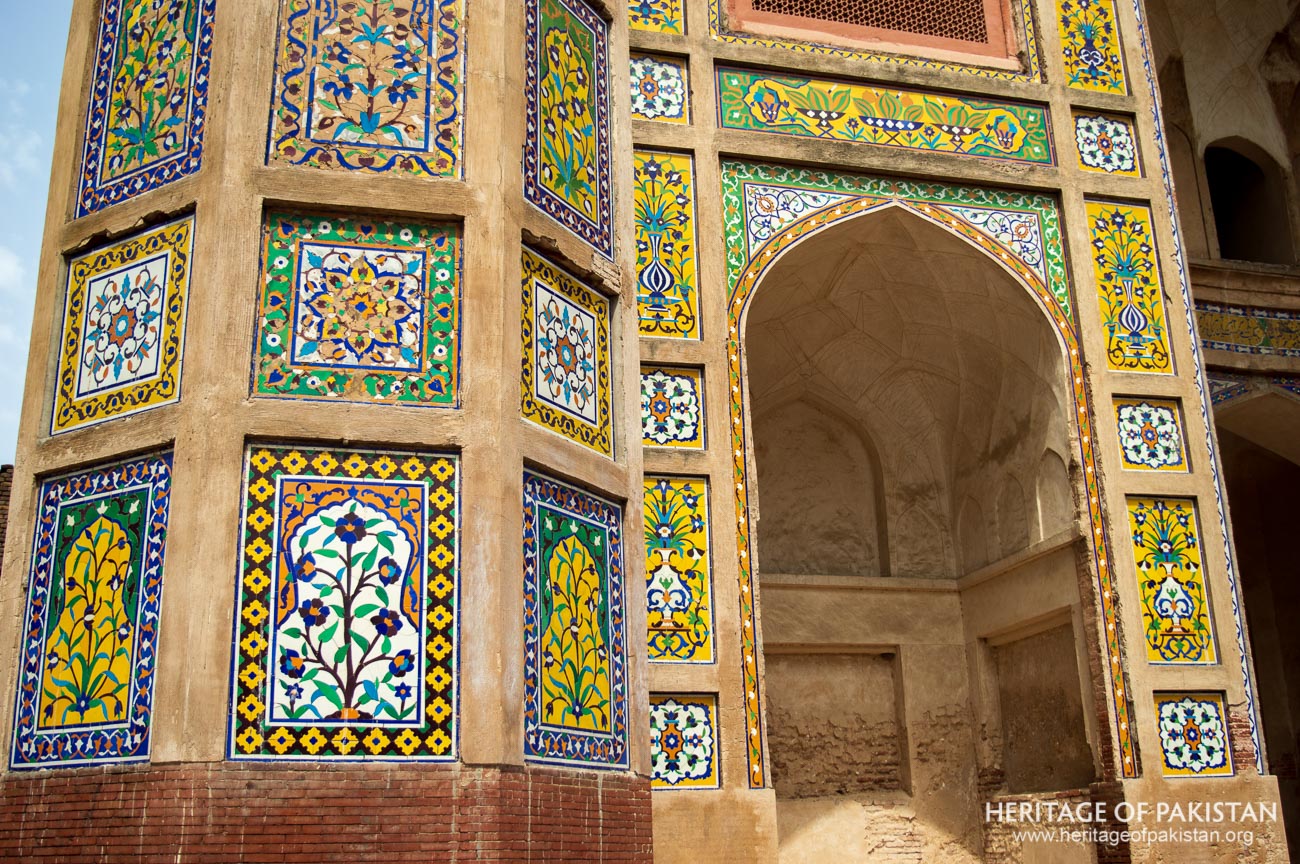 Chauburji with its beautiful colorful tilework.
Chauburji with its beautiful colorful tilework.Chauburji is beautiful example of the grandeur of Mughal architecture and the opulence of the gardens that once flourished in Lahore earning it the name of 'City of Gardens'. The monument’s design, characterized by its four towering minarets and the remnants of its intricate decorations, reflects the aesthetic preferences and artistic innovations of the Mughal era. Today, Chauburji stands as a significant historical and architectural relic, reflecting the grandeur of the Mughal era and the evolution of decorative arts during that period. The intricate colorful tile work, Kashikari, contrasting with red brick makes it really beautiful, The newly constructed Orange Line Metro comes dangerously close to this heritage monument and was a subject of controversy at the time of its construction.
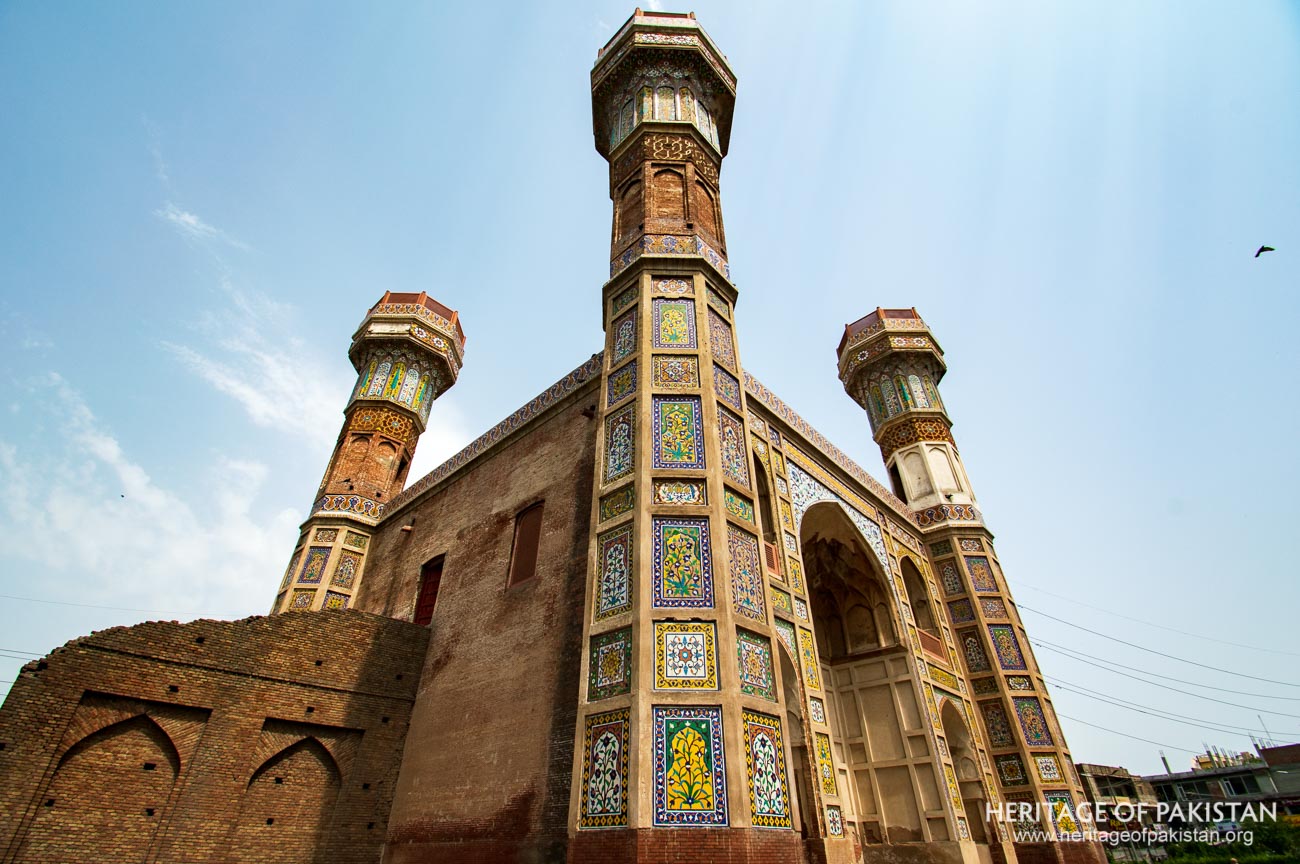
Chauburji is a striking example of Mughal architecture, blending elements of Timurid and Persian styles with local influences. The structure is primarily constructed of brick, adorned with enameled tilework or Kashikari in vibrant shades of blue, yellow, and green, which highlights its intricate designs and grandiose appearance.
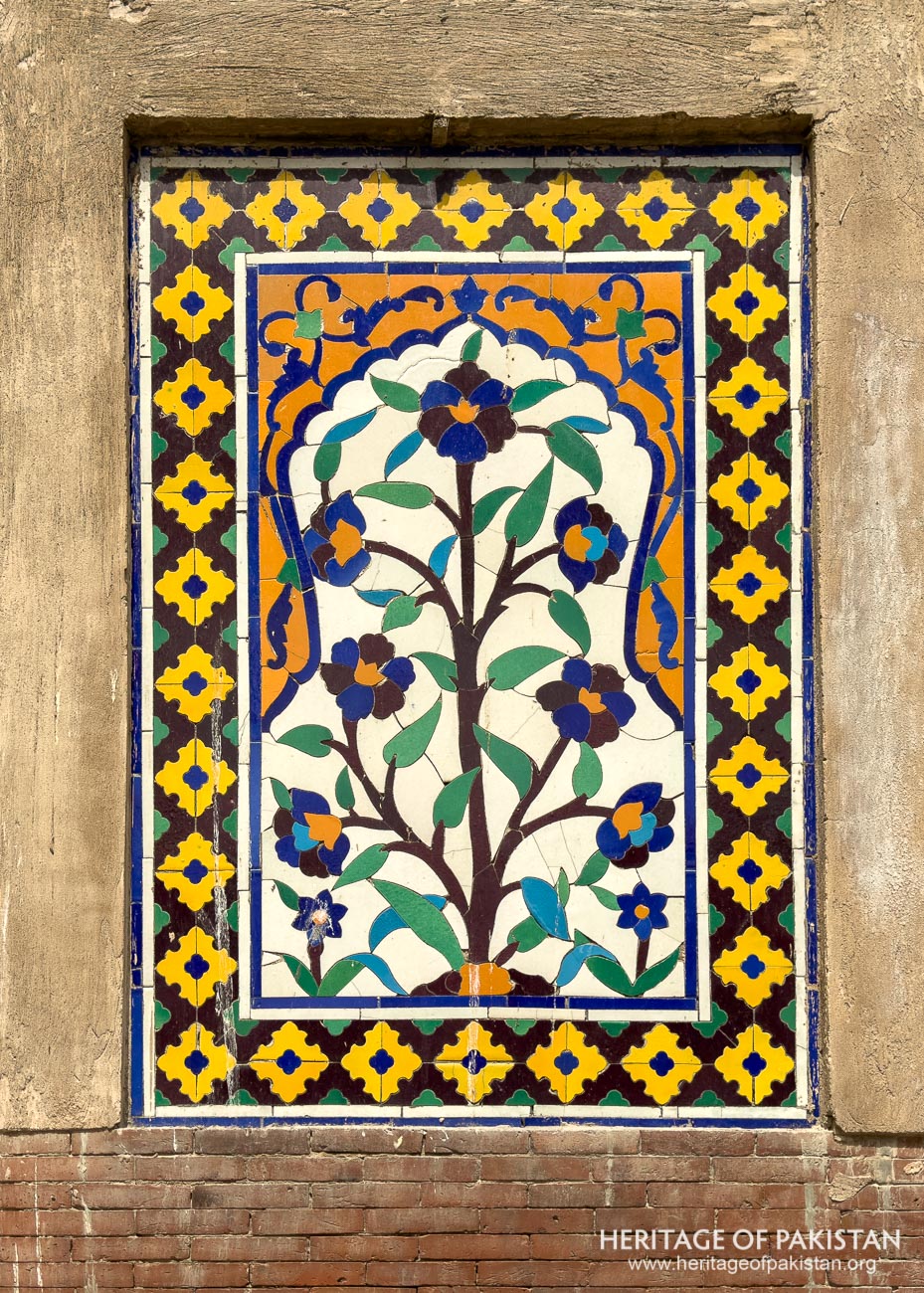
The central structure of Chauburji features four large minarets, the building's main imposing feature, and the source of its name, with 'Chau' meaning four and 'Burj' meaning minarets. These minarets are particularly distinctive due to their unique design, widening significantly at the top—a feature not present in other structures of the subcontinent. This architectural choice not only adds to the visual appeal of the monument but also emphasizes its grandeur.
The eastern and western facades of Chauburji are marked by Timurid-style entrances known as ‘Iwans.’ An iwan is a rectangular hall or space, typically vaulted and walled on three sides, with one end entirely open. The formal gateway to the iwan is called a pishtaq, a Persian term for a portal that projects from the facade of a building. These portals are often decorated with calligraphy bands, glazed tilework, and geometric designs, enhancing the aesthetic and cultural significance of the structure. Additionally, the iwans at Chauburji are adorned with Muqarnas, the honeycomb designs that embellish the top of the iwan, showcasing the intricate craftsmanship typical of Mughal architecture.
A notable feature of Chauburji is the inscription of Ayat ul Kursi from the Holy Quran in glazed letters over the main vault. This religious inscription not only adds a spiritual dimension to the monument but also provides historical context, as it includes the date of construction in Hijri 1056, corresponding to 1646. This date marks the period of Emperor Shah Jahan’s reign, under which Chauburji was constructed.
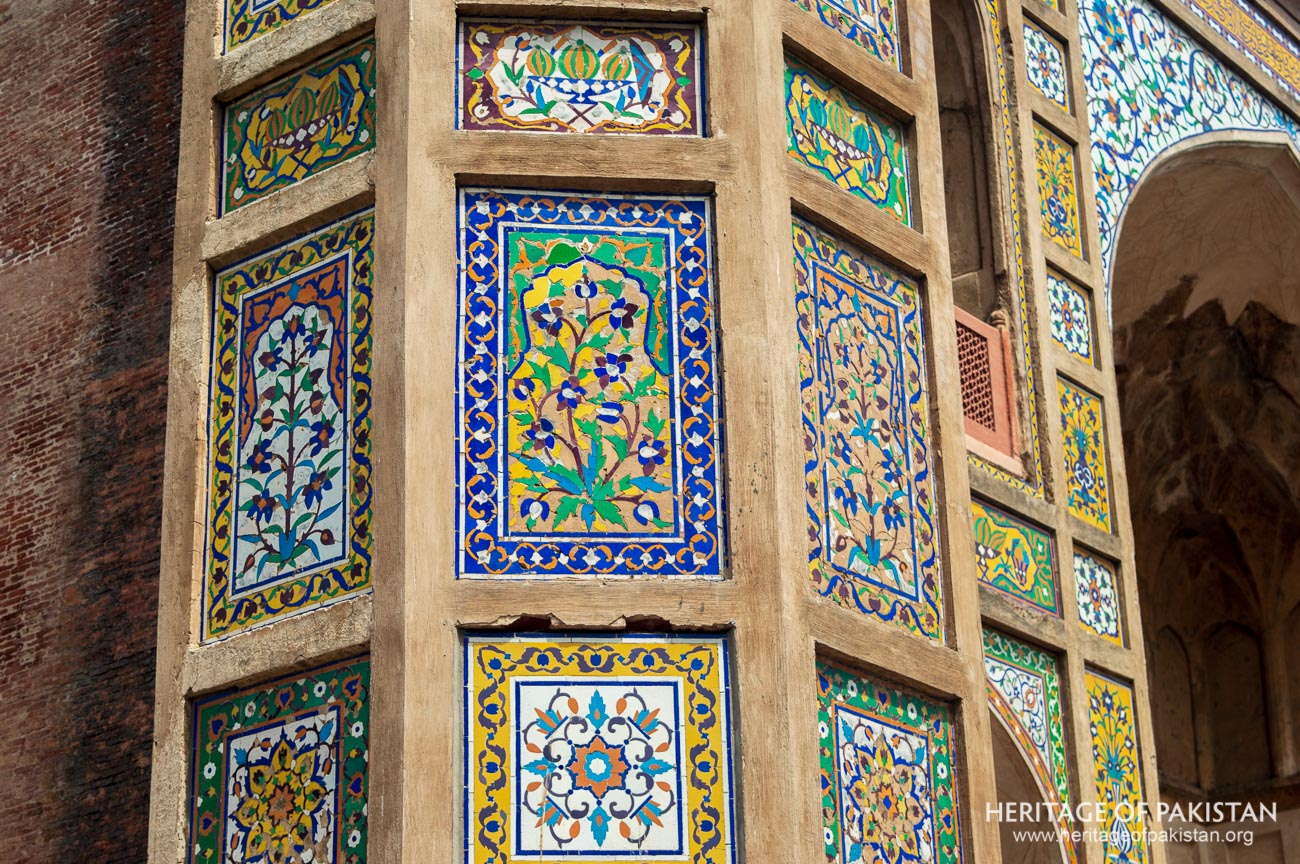
The exterior of Chauburji is an example of the rich Mughal decoration prevalent in the mid-seventeenth century. It features a combination of vegetal, floral, calligraphy, and geometric designs executed in faience mosaic and brickwork. This intricate decorative work extends to the octagonal corner minarets, which are brilliantly embellished, enhancing the visual complexity and beauty of the structure. Although the interior now bears only vague impressions of frescoes, these remnants suggest the former splendor of Chauburji's inner spaces.
Unfortunately, one of the four minarets has become dilapidated, and the monument has suffered from poor condition over time. Despite this, the main architectural merit of Chauburji lies in its rich mosaic decoration, which covers its entire façade. The slender minarets, given their height, culminate in coved platforms that once supported arched pavilions, further adding to the monument's elegant shape.
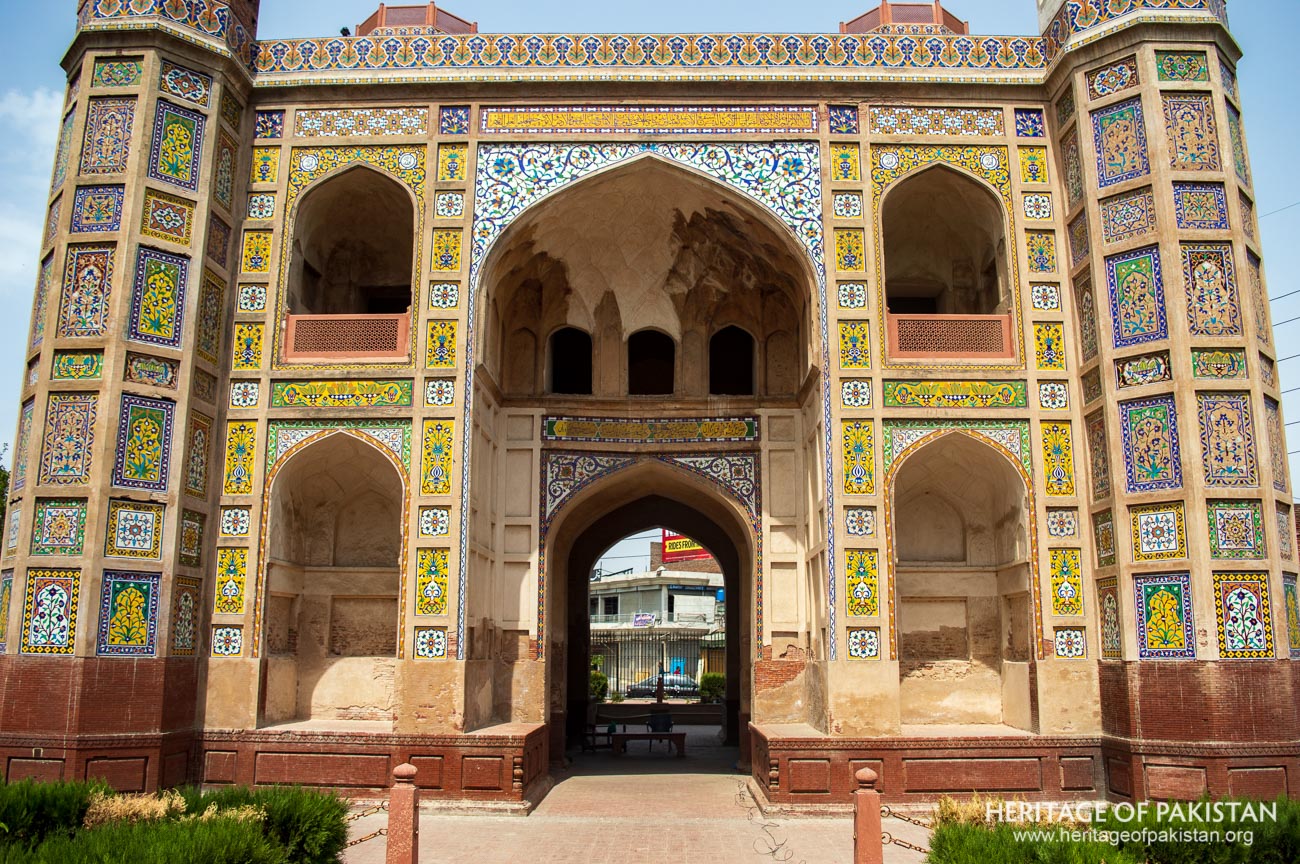
The garden, for which Chauburji once acted as a gateway, no longer exists. This loss, however, does not diminish the architectural significance of the gateway itself. The garden historically extended from Nawankot in the south to the main city of Lahore towards the north, reflecting Lahore’s erstwhile title as ‘The City of Gardens.’ The disappearance of the garden, likely due to damage inflicted by the River Ravi.
The architecture of Chauburji Lahore is a remarkable blend of aesthetic beauty and historical significance. Its combination of brickwork with enameled tilework, the unique design of its minarets, and the rich mosaic decorations all contribute to its status as an architectural masterpiece of the Mughal era. Despite the ravages of time and the loss of its accompanying garden, Chauburji remains a symbol of the artistic and cultural zenith achieved during the mid-seventeenth century.
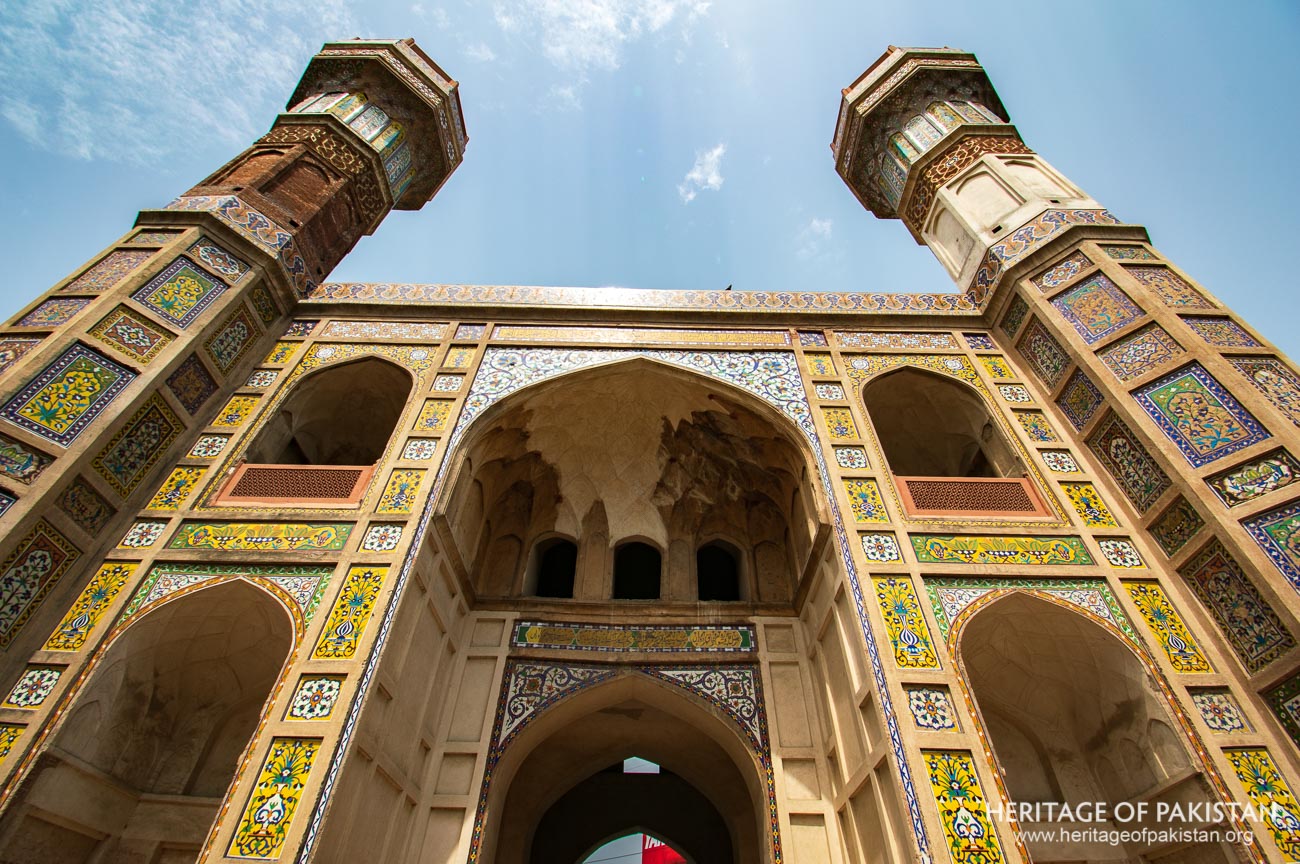
By the 19th century, Chauburji had become somewhat dilapidated. A significant event contributing to its deterioration was the loss of its northwest tower due to an earthquake in 1846. Recognizing the historical and architectural value of Chauburji, the Department of Archaeology and Museums undertook restoration efforts in the 1960s. These efforts included the restoration of the fourth minaret, which had been destroyed.
The conservation work aimed to preserve the intricate enameled tilework and structural integrity of this important monument. Today, Chauburji is listed on the Protected Heritage Monuments of the Archaeology Department of Punjab, ensuring ongoing preservation and protection efforts.


All Photographs by Syed Noor Hussain and Sania Azhar.
All Rights Reserved. Photos may be used for Non-Commercial, Educational, Artistic, Research, Non-Profit & Academic purposes.
Commercial uses require licensing agreement.


Add a review